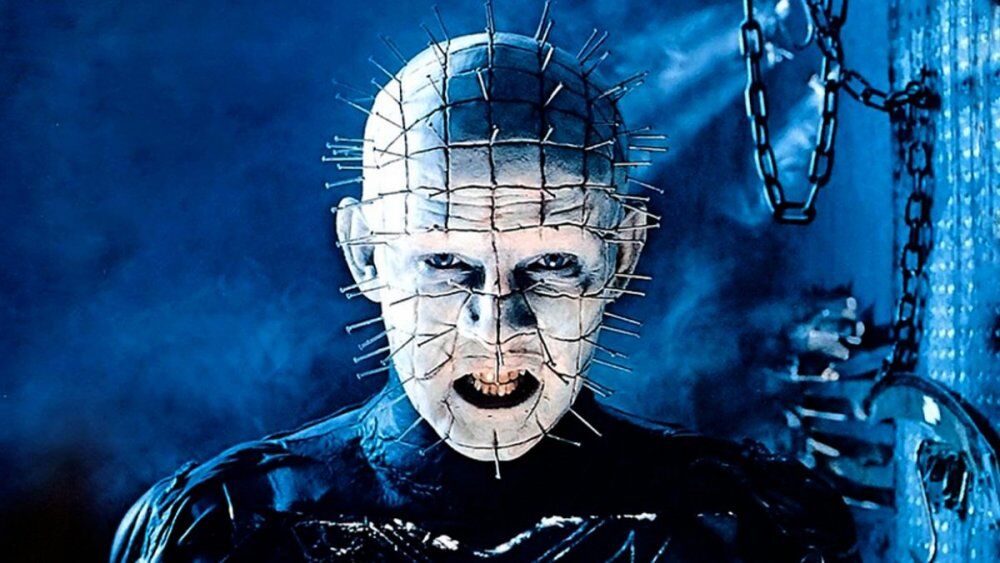One would not need to delve too far into the horror genre without the legendary name of Clive Barker popping up. Born October 5th 1952, this English author, director, playwright and visual artist is recognized as one of the most unique and imaginative minds to adopt the macabre. In the mid 80’s Barker rose to prominence, carving himself a spot as a leading horror writer with his Books of Blood series that, when released, featured a quote from none other than Stephen King stating: “I have seen the future of horror, and his name is Clive Barker”. Since then a great amount of his work has been translated to film, some of which (arguably the better) he even took it upon himself to write and direct. Barker wrote the screenplays for Underworld (1985) and Rawhead Rex (1986), both directed by George Pavlou. Displeased by how his material was handled, he moved to directing with the first in the extensive Hellraiser series, born from his novella The Hellbound Heart. To this day Barker branches into every area of the horror genre he can, his surreal and fantastically unsettling style inspiring thousands to look at horror just a little differently.
Ever the visionary, Barker has created legions of characters for his books and comic series, often painting them himself. His visual art had been featured in galleries across the United States, as well as featuring heavily in his own books, making his end products far more vivid forms of personal expression.
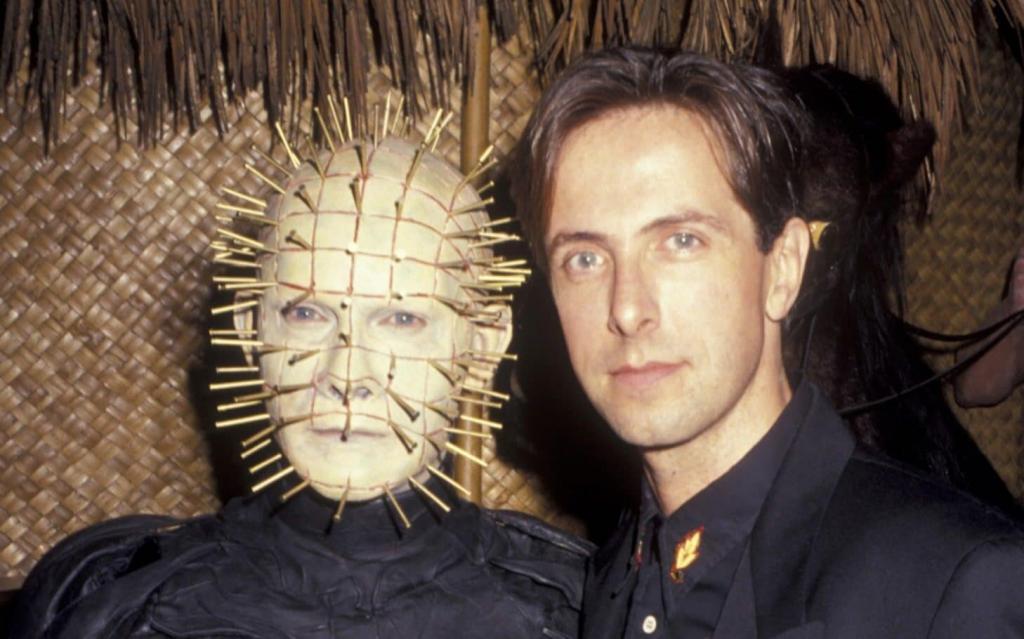
Barker horror adaptations and spin-offs in comics include the Marvel/Epic Comics series Hellraiser, Nightbreed, Pinhead, The Harrowers, Book of the Damned, and Jihad; Eclipse Books’ series and graphic novels Tapping The Vein, Dread, Son of Celluloid, Revelations, The Life of Death, Rawhead Rex and The Yattering and Jack, and Dark Horse Comics’ Primal, among others. Barker served as a consultant and wrote issues of the Hellraiser anthology comic book.
Barker’s short story The Forbidden (from Books of Blood) was adapted for the screen in Bernard Rose’s 1992 Candyman, and has been adapted again recently into a reboot of the same name. With this new modernisation of the classic 80s tale, it only stands to reason that a fresh new audience of moviegoers will be introduced to Barker’s madness, viewers who will be wondering what else has been crafted by such a unique maestro of morbidity.
BOOKS
The Damnation Game (1985)
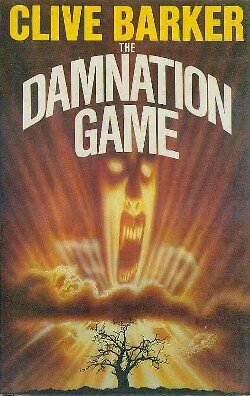
Not long after publishing the first trilogy of Books of Blood in 1985, Barker set about writing his novel The Damnation Game, a Faustian story laden with all the dark eroticism and fantastical gothic style that readers have now come to expect from the man.
Recently released convict and avid gambler Marty Strauss finds himself in the employ of Joseph Whitehead, one of the richest men in the world. As Whitehead’s bodyguard, Strauss encounters an increasing series of unnatural and horrific events involving Whitehead and a demonic man named Mamoulian, who has some connection to a ‘deal with the devil’ made by Whitehead during WW2. With detailed subject matter ranging from cannibalism and incest to raising the dead and self-mutilation, this early vision of Barker’s was no less potent and uncompromising than the works it led to.
The Hellbound Heart (1986)
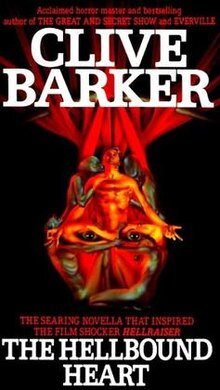
Keeping his gory, visceral style in the spotlight, Barker published his novella The Hellbound Heart in November 1986 though Dark Harvest’s Night Visions Anthology series.
Hedonistic criminal Frank Cotton, a man so enamored with sensory experience that he will harm anyone to achieve it, finds a puzzle box known as the Lemarchand Configuration, a device which when completed can summon a torturous demonic race known as Cenobytes. With no differentiation between pain and pleasure, these entities introduce whoever summons them to eons of horrific torture, sometimes transforming their victims to Cenobytes themselves.
In 1987 Barker wrote and directed a film adaptation known as Hellraiser, which later snowballed into the long-running franchise featuring Doug Bradley’s infamous Pinhead that we know and love today. After the success of the first Hellraiser flick, The Hellbound Heart was released as a standalone title by HarperPaperbacks in 1991.
Cabal (1988)
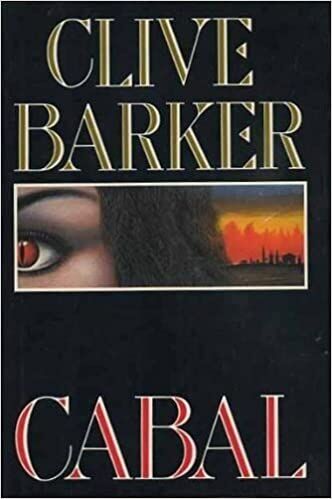
Cabal is Barker’s third novel and was published in the US in 1988 as part of a collection featuring it and several shorts from the sixth volume of his Books of Blood series. The story centres around Boone, a troubled young man suffering from a vague mental disorder, and his trusted psychiatrist Decker. Decker informs boon that he was responsible for a series of brutal murders in Calgary, though Boone can remember nothing of actually committing the heinous acts. Seeing himself as a monster, Boone begins searching for the legendary city of Midian, where other monsters had apparently found refuge.
In 1990 Barker wrote and directed a screen adaptation of the novel, entitled Nightbreed after the legion of downtrodden folk who inhabit Midian. Sadly the flick was a commercial and critical flop, Barker pointing out that this was due to the film company trying to sell Nightbreed as a standard slasher without any real knowledge of the lore behind the book. Cabal thankfully remains a classic, featuring tense storytelling, rich worldbuilding around the mythical city of Midian and one truly disturbing arch villain.
The Great and Secret Show (1989)
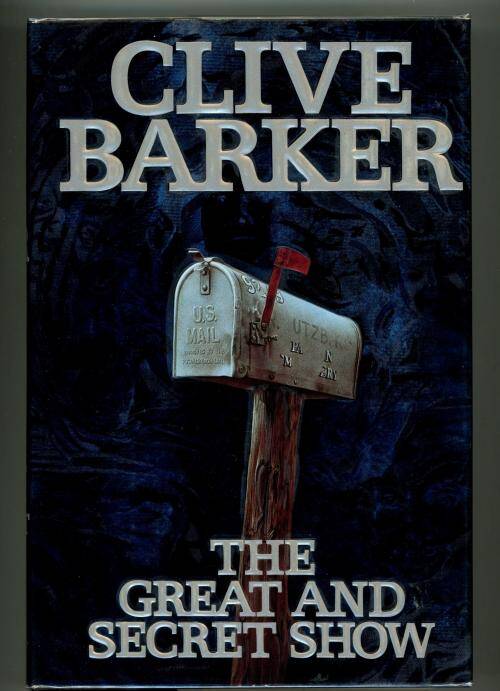
The first in a trilogy that came to be known as The Art trilogy by fans, The Great and Secret Show is Clive Barker’s fantasy novel which he describes as about “sex, the movies and Armageddon in Hollywood”. He also stated that it was the hardest to write of all of his books.
The story concerns Quiddity, a mystical dreamscape pictured as an ethereal sea, which two highly evolved men are locked in a decades-long battle for control of. Randolph Jaffe wants to leach power from the realm of Quiddity while Richard Fletcher would like the place untouched and untainted. Their battle seeps from this realm into the real world where reality itself is affected, as well as the fate of the entire human race.
Of course, in true Barker style, he has also been quoted to say: “”The sexual stuff has always been very strong in my books and this is no exception. There are scenes of profound weirdness that shouldn’t be talked about over a civilized dinner table.”
Imajica (1991)

Steering further into dark fantasy realms and away from his usual horror affair, Barker next released Imajica in 1991, proclaiming that it was his favourite piece of his writing up to that point. At a massive 824 pages on first printing, the epic describes Earth as the Fifth Dominion and chronicles its reconciliation with the other four Dominions, esoteric parallel realities known to none but a few on Earth. A vast and intricate story covering themes such as god, love, sex, gender and death, much of the content of which apparently came to Barker in dream form. Barker was so inspired by these dreams that he wrote Imajica inside of fourteen months, working twelve to fourteen hours a day.
The Thief of Always (1992)
The Thief of Always was something of a curveball for Barker, since it contained plenty of his surreal oddities in style and story, though refrained from his usual foray into dark sexuality to create a fable intended for children just as much as adults.
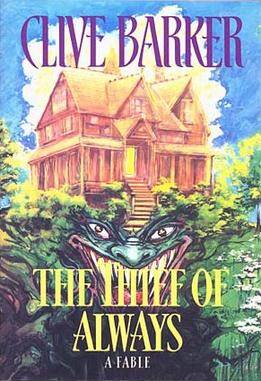
‘The Holiday House’ is a fictional paradise for children where a bored and disenchanted eleven-year-old named Harvey Swick one day finds himself. The house is indeed a paradise, where it is Halloween every evening, Christmas every night and seemingly has four seasons occurring in the space of a day. After spending time at the Holiday House, Harvey begins to uncover secrets about its elusive creator, Mr Hood, and a plot so hideous that he should want to leave the place forever and not look back.
This was a title in which Barker included his own art, both on the cover and featuring black and white illustrations of his throughout.
FILMS
Rawhead Rex (1986)
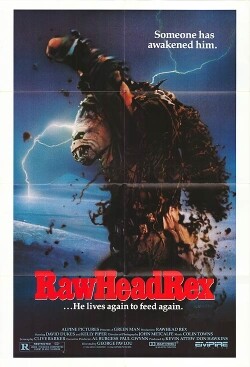
The script for Rawhead Rex was written by Clive Barker himself, though directing fell to George Pavlou, and the end result was a schlocky flop of a B-movie that, aside from later cult attention, garnered little to no worth to anyone involved. Adapted from another short in the Books of Blood series concerning a pagan creature predating Abrahamic religion who is inadvertently awakened by farmers in the Irish countryside. Aside from some of Barker’s classic subtext around ancient evil, sexuality and religion, the film was saturated in many of the expected tropes of 80s monster movies, pushing it more in line with a slew of other similar flicks.
A lot of the negative reception reportedly came from the design of Rawhead himself. Barker’s original concept for the monster was apparently that of a nine-food phallus with ground meat for a head. When Rawhead came out looking more ogre or gorilla-like, and not unlike a lot of B-movie monsters at the time, Barker felt dissatisfied to the point that he vowed to be much more involved in his later adaptations. This is considered the main reason he chose to write and direct Hellraiser (1987) next. He has even voiced an interest in remaking the film in his own vision, though his reboot of Hellraiser will quite likely be next in line.
Hellraiser (1987)
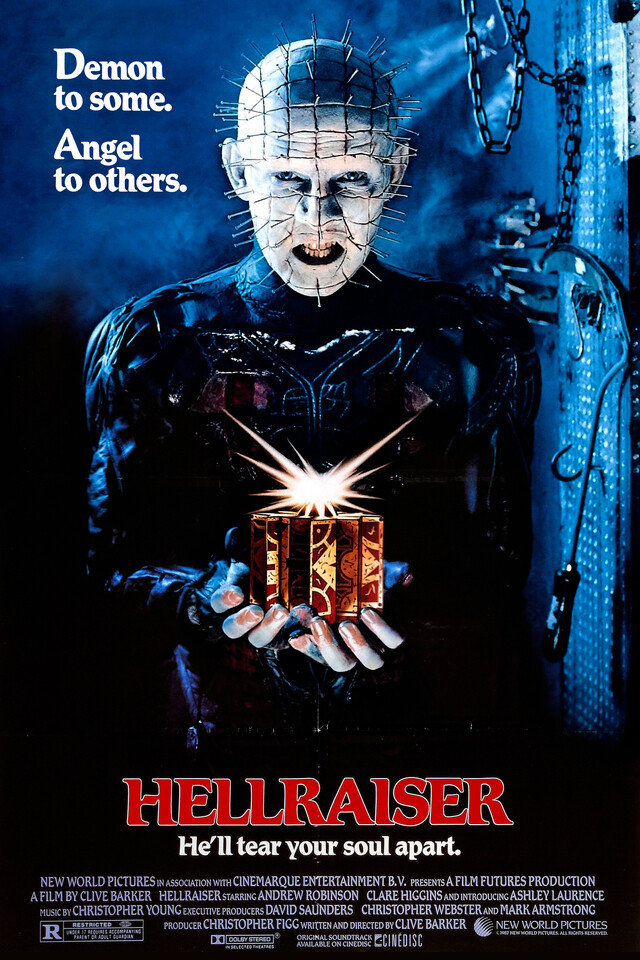
Hellraiser is not only Barker’s most famous and recognizable work but is a milestone for the horror genre to this day. Based on his 1986 novella The Hellbound Heart, Hellraiser’s story centers around young Kirsty Cotton (Ashley Laurence), caught in a hellish struggle between her mother Julia, her criminally hedonistic uncle Frank and a gang of leather-clad, body-modded, extra-dimensional demons called the Cenobites. Frank is torn apart by chains upon failing to solve an ancient puzzle box known as the Lament Configuration, and after escaping the clutches of Hell begins to make his way back to the mortal world. He does so with the help of Julia, who kills men to feed his building form.
Most notable in this film is the performance of Doug Bradley as Pinhead, or ‘The Hell Priest’, the leader of the cenobites. The character was so expertly and chillingly portrayed as to spawn a series of over nine other films along with extensive series of comics and novels. Pinhead has even appeared as a playable character on multiplayer horror game Dead By Daylight.
Far more than a simple horror, Hellraiser explored themes of religion, women’s agency, the pleasure-pain dynamic, ambition, hedonism, and of course sexuality as a conduit in the battle between good and evil.
Nightbreed (1990)

Operating somewhere in the midst between fantasy and horror, Nightbreed is an adaptation of Barker’s novel Cabal, wherein the disturbed Boone, here played by Craig Schaffer, is convinced of his murderous nature by the psychedelic therapist Decker, here portrayed by none other than David Cronenberg, and travels to find the mysterious city of Midian where he might find refuge.
After being shot to death by a police squad sent by Decker, and then mysteriously resurrected, Boone is given refuge in Midian and becomes acquainted by its quirky and visually striking populace of undead rejects. Boone must convince Midian’s people to fight back against his pursuers lest their secret be revealed to the entire world.
The film was a commercial and critical flop in its initial theatrical run, but has since become a cult success, with a director’s cut released in 2014, several tie-in comic books and two video games.
The Midnight Meat Train (2008)

Heralded by many as the best Barker adaptation since Hellraiser, The Midnight Meat Train is an adaptation of the 1984 short story of the same title. With a stellar cast featuring Bradley Cooper, Vinnie Jones, Brooke Shields and Ted Raimi, some top-drawer set pieces and an ending that leaves most viewers floored, this is undoubtedly the best modern Clive Barker experience there is on offer.
Directed by Japanese filmmaker Ryuhei Kitamura (Alive), the story follows photographer Leon (Cooper) who is determined to capture the grit and seedy nature of New York’s subway system. As a character he is on the questionable end of the moral scale, committing such acts as photographing a sexual assault before making any attempt to stop it. He begins an obsessive habit of following serial killer Mahogany (Jones) also known as ‘The Subway Butcher’. While viewers are led to believe this will be a standard slasher affair, certain narrative curveballs ensure this will be a viewing experience you’ll not soon forget.
References:
https://en.wikipedia.org/wiki/Clive_Barker
https://www.theguardian.com/film/2017/oct/30/how-we-made-hellraiser-horror-film-pinhead-clive-barker
Joe first knew he wanted to write in year six after plaguing his teacher’s dreams with a harrowing story of World War prisoners and an insidious ‘book of the dead’. Clearly infatuated with horror, and wearing his influences on his sleeve, he dabbled in some smaller pieces before starting work on his condensed sci-fi epic, System Reset in 2013.Once this was published he began work on many smaller horror stories and poems in bid to harness and connect with his own fears and passions and build on his craft.
Joe is obsessed with atmosphere and aesthetic, big concepts and even bigger senses of scale, feeding on cosmic horror of the deep sea and vastness of space and the emotions these can invoke. His main fixes within the dark arts include horror films, extreme metal music and the bleakest of poetry and science fiction literature.
He holds a deep respect for plot, creative flow and the context of art, and hopes to forge deeper connections between them around filmmakers dabbling in the dark and macabre.

